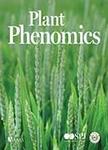Semisupervised Deep State-Space Model for Plant Growth Modeling
作者机构:Graduate School of Integrated Science and TechnologyShizuoka University3-5-1 JohokuNaka-kuHamamatsuShizuoka 432-8011Japan College of InformaticsAcademic InstituteShizuoka University3-5-1 JohokuNaka-kuHamamatsuShizuoka 432-8011Japan JSTPRESTO4-1-8 HonchoKawaguchiSaitama 332-0012Japan
出 版 物:《Plant Phenomics》 (植物表型组学(英文))
年 卷 期:2020年第2卷第1期
页 面:122-137页
核心收录:
学科分类:082804[工学-农业电气化与自动化] 08[工学] 0828[工学-农业工程]
基 金:This work was supported by JST PRESTO Grant Number JPMJPR15O5 Japan.Additionally we greatly appreciate the support of Mr.Maejima and Mr.Imahara who provided the data collection location Shizuoka Prefectural Research Institute of Agriculture and Forestry
摘 要:The optimal control of sugar content and its associated technology is important for producing high-quality crops more stably and ***-based reinforcement learning(RL)indicates a desirable action depending on the type of situation based on trialand-error calculations conducted by an environmental *** this paper,we address plant growth modeling as an environmental model for the optimal control of sugar *** the growth process,fruiting plants generate sugar depending on their state and evolve via various external stimuli;however,sugar content data are sparse because appropriate remote sensing technology is yet to be developed,and thus,sugar content is measured *** propose a semisupervised deep state-space model(SDSSM)where semisupervised learning is introduced into a sequential deep generative *** achieves a high generalization performance by optimizing the parameters while inferring unobserved data and using training data efficiently,even if some categories of training data are *** designed an appropriate model combined with model-based RL for the optimal control of sugar content using SDSSM for plant growth *** evaluated the performance of SDSSM using tomato greenhouse cultivation data and applied cross-validation to the comparative evaluation *** SDSSM was trained using approximately 500 sugar content data of appropriately inferred plant states and reduced the mean absolute error by approximately 38%compared with other supervised learning *** results demonstrate that SDSSM has good potential to estimate time-series sugar content variation and validate uncertainty for the optimal control of high-quality fruit cultivation using model-based RL.



